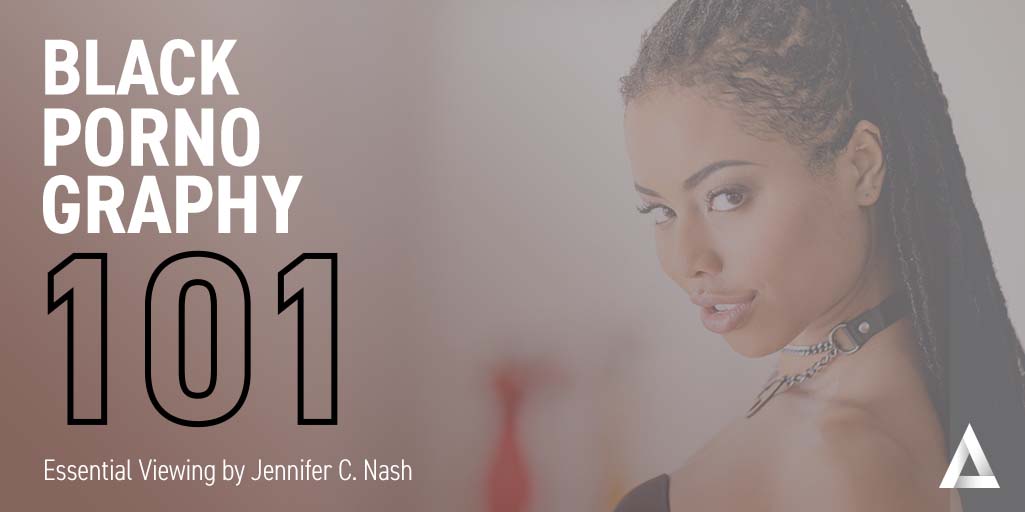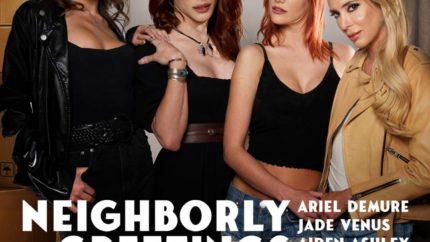
Written by Jennifer C. Nash
Jennifer C. Nash is Jean Fox O’Barr Professor of Gender, Sexuality, and Feminist Studies at Duke University. She is the author of three books, most recently Birthing Black Mothers (Duke University Press, 2021).
__________________________
Black history month is often a celebration of civil rights heroes whose courageous labor changed the world. It is rare that sex, sexuality, and sexual pleasure enter conversations around Black history, and even more rare that Black history month foregrounds the sexual civil rights heroes who still fight for Black sexual freedoms, including the freedoms to desire, imagine, and seek pleasure.
To celebrate Black history month and Black people’s long history of laboring in pornography, I offer you a list of essential viewing. This is a list for anyone interested in an erotically charged Black history list, one that emphasizes the place of pleasure, longing, and desire in Black freedom.
Cards on the table: I come to this list with an orientation toward the past. After writing a book on pornography’s Golden and Silver Ages—the 1970s and 1980s— I remain fascinated by pornography’s histories. Viewers often come to pornography as if it has no history. But I have always been curious about the Black people who appear on the pornographic screen, especially in the era when the pornographic screen was a movie theater screen or a television screen. I have been fascinated by their stories (many of which are documented brilliantly by Mireille Miller-Young). I have wanted to understand both how they were represented and how they represented themselves in pornography. I still long to understand how pornography came to represent Black people as desirable objects and, at times, as desirous subjects, and to explore how pornography trained and taught its viewers to desire Black flesh.
My research has always emphasized how pornography’s forms and pleasures have changed alongside technological shifts. It is a different experience to watch a film in a theater (surrounded by others!) than to watch it with a remote control in hand, rewinding and fast forwarding. And it is even more different to stream a short clip on the intimacy of a hand held iPhone screen. I also think that pornography produces different pleasures on these distinct mediums: watching together in a movie theater, laughing out loud at mechanical dialogue or strange plot twists, or sitting in collective arousal, is quite different than streaming on one’s phone.
And I am always interested in thinking about pornography in the context of the history of cinema. I write this a few days after Sidney Poitier’s death, and I am reminded of his pathbreaking role in the interracial love story Guess Who’s Coming to Dinner (1967). That was five years before Black actor Johnnie Keyes and white actress (and Ivory soap girl) Marilyn Chambers would have sex in Behind the Green Door. I can’t help but wonder how Poitier’s chaste interracial love story made possible (and pleasurable) the scene between Chambers and Keyes, how the cinematic world was newly open to the possibility of love, intimacy, and sex across the so-called color line.
There are often two stories told about Black pornography. One is that it is a story of racism and racial exploitation. In that account, Black people appear in pornography to shore up white fantasies of Black big penises, Black women’s hyper sexuality, and Black sexual deviance. There’s another story that foregrounds the possibilities of Black sexual liberation through pornography. In this account, films anticipating Black viewers are crucial for Black freedom. My list of essential viewing suggests that these early films provide a kind of blueprint for how pornography would imagine and continually represent Black people, with an emphasis on the actors whose bodies taught viewers about desirable Black flesh.
- Behind the Green Door (1972)
The Golden Age produced many of pornography’s classics, including Deep Throat (1972) and Debbie Does Dallas (1978). But Behind the Green Door is distinct because it centers interracial sex. When Gloria Saunders (actress Marilyn Chambers) is abducted and taken to a sex club, she finds herself on stage in front of an aroused audience. They watch her have sex “as she’s never been loved before.” The film’s climax features Chambers having sex with Johnnie Keyes, the Golden Age’s preeminent Black male star who appeared here (and in other films) as a silent African savage. With his bone necklace, his tribal face paint, and his leotard with a cut-out for his large penis, the interracial sex scene as filmic climax suggested that interracial sex was the quintessential form of transgressive – and even liberating – sex. Of course, this vision of interracial sex as liberating hinged on Keyes performance of a racial stereotype. Reduced to a big Black penis, a silent fucking machine, Keyes’ body made possible Chambers’ transformation. It is also worth noting that a scene that is often described as hard-core pornography’s first interracial scene was a white woman and a black man.
- Lialeh (1974)
Lialeh is the sweet, soulful spot where blaxploitation and pornography meet. Lialeh features a beautiful soundtrack by Bernard Purdie, a nearly all-Black cast, and a relentless focus on various forms of Black pleasures, including its protagonist Lialeh’s sexual pleasure. But it also focuses on Arlo, a Black male club owner trying to put together an erotic revue, and pay rent (to his white landlord). This focus on the economics of Black business ownership—something that certainly sounds out of place in a porn film—suggests that Lialeh sees Black pleasure as including economic autonomy and sexual autonomy. The film’s insistence on a Black aesthetic, down to its soulful soundtrack, suggests a desire to speak to a Black viewing public, hungry to see its desires on-screen.
- Sexworld (1978)
I confess—I’m obsessed with this film. Sexworld borrowed from Westworld (1973) and imagined, much like Behind the Green Door, a sexual getaway that allowed its visitors to express their hidden longings and desires. Much like Green Door, it is interracial sex that is the most repressed and most intense desire haunting one white male participant—Roger—who is paired with Golden Age Black female icon Desiree West, playing the role of Jill. When Jill arrives in Roger’s room, he assumes she’s the maid. But she insists that she is there for sexual pleasure and satisfaction, and over the course of their highly racialized playful banter- which often includes Roger insisting that he would never have sex with a Black woman- she and Roger end up having sex. And, of course, much like Chambers in Green Door, Roger is transformed, so much so that he begs the resort owners for one last opportunity to see Jill. Extra points for some of the most comical lines ever uttered in a Golden Age film, including Jill telling Roger to “prove to me that your spigot ain’t no bigot.”
A film by the controversial Dark Brothers (their companion film Let Me Tell Ya Bout Black Chicks was banned). White Chicks introduces viewers to a group of Black male criminals talking about their experiences having sex with white women. While the narrative structure of the film—Black male criminality, white women’s sexual desirability—feels familiar, Mireille Miller-Young emphasizes that one of the Black male actors wrote the script, requiring an exploration of how Black actors were deeply involved in creating and shaping the conditions of their representation and labor. She also emphasizes that unlike, say, Keyes’ silent role in Green Door, White Chicks offers Black male actors the change to speak, to be in conversation with each other, and to perform complex roles.
- Black Taboo (1984)
Enter the Silver Age: that era of cheaply mass produced video pornography. But the Silver Age gave us a “Black market,” a new recognition of the profits to be garnered from films that promised to showcase Black actors. Black Taboo is emblematic of the era, from its low-budget aesthetic, to its somewhat nonsensical plot (it is a Black pseudo-incest story). But what I love about this film, aside from its all-Black cast, and its insistence that Black funky sex unfolds in the most banal – dare I say ordinary – domestic spaces, is its sense of the absurd. It is also a film where viewers get to see the amazing Jeannie Pepper, Silver Age superstar. Pepper, much like Desiree West, became a crucial body for educating viewers and filmmakers on how to write and imagine Black desirability.
__________________________
I end this list well before naming the actors whose names and work might be familiar to readers, including Lexington Steele, Janet Jacme, Vanessa Blue, and Jada Fire. Part of my desire is to think about how all the films I list here, and the actors whose work is recorded on these films, drafted a blueprint for how black people and their bodies and longings are seen in pornography now. One way to honor Black history is to see these early sex workers as civil rights pioneers, whose work imagined Black sexual freedom.

